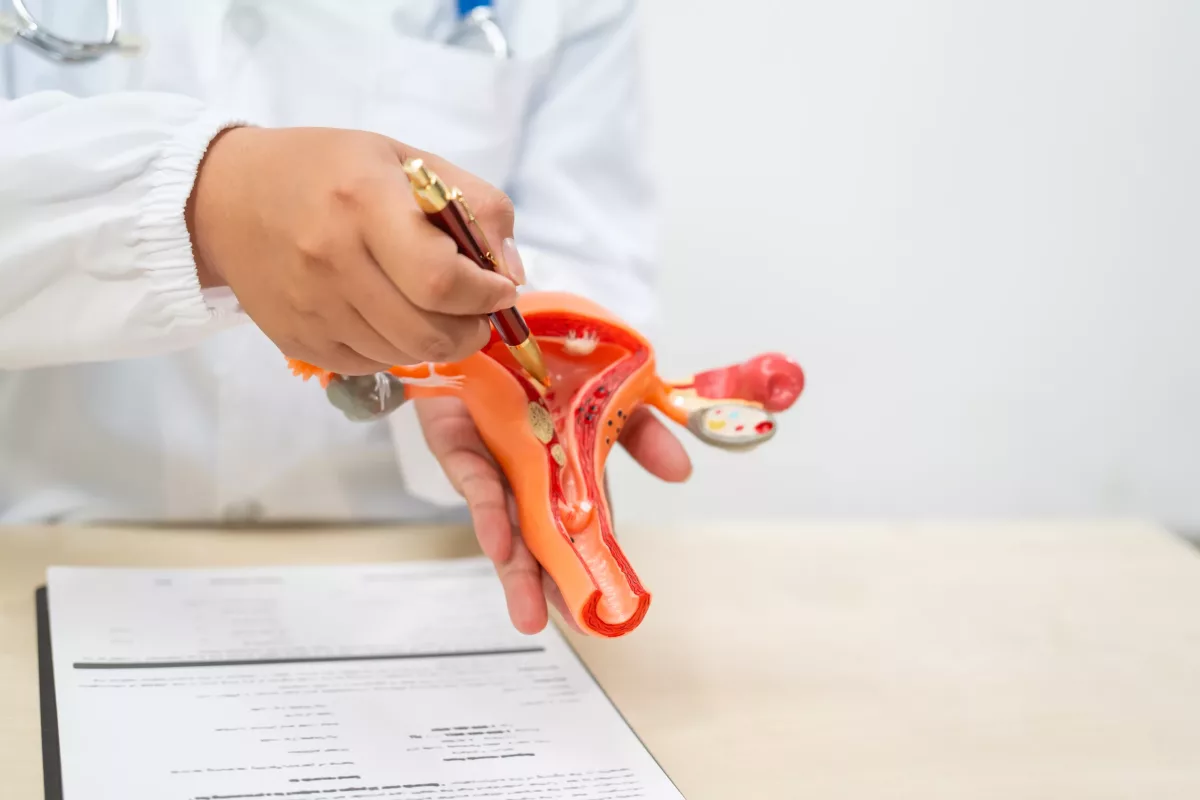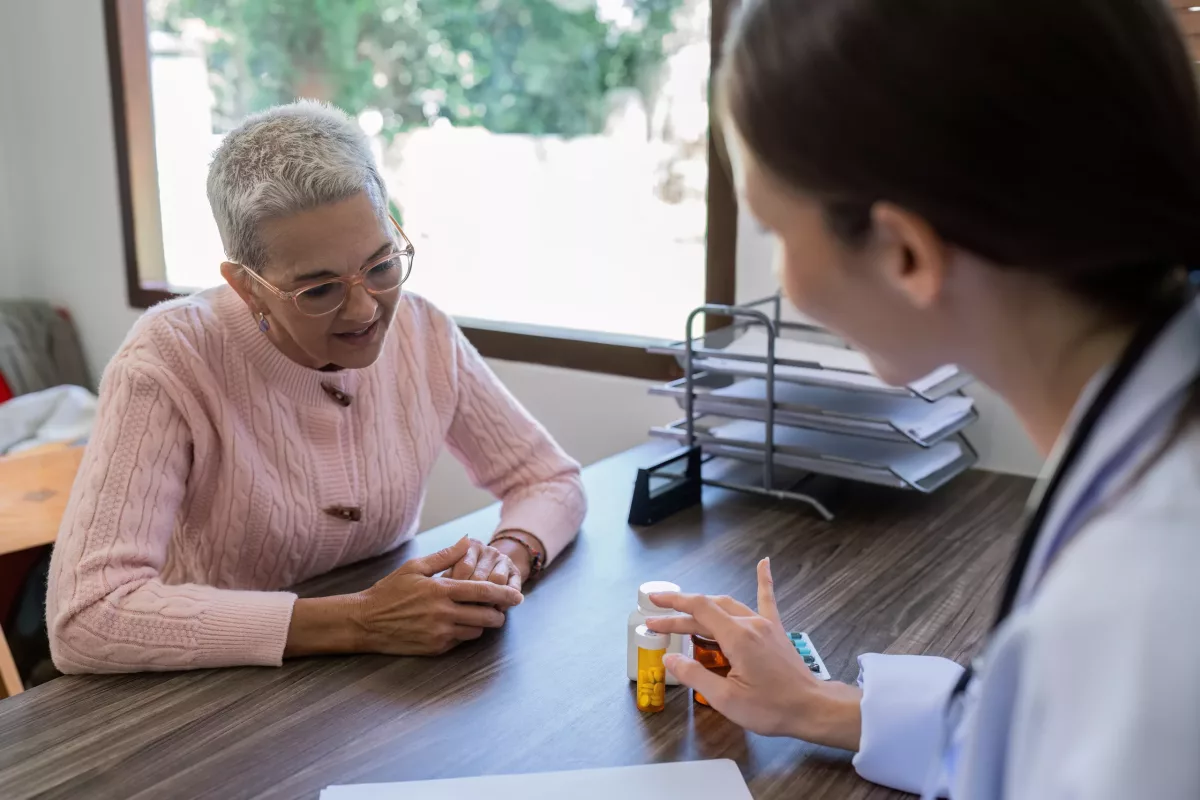A health condition that often affects females transitioning to menopause and cause the lining of the vagina to get drier and thinner due to a lack of Estrogen is called vaginal atrophy. Sometimes, this condition is called atrophic vaginitis or genitourinary syndrome of menopause. The most common symptoms include urinary tract infections (UTIs), frequent urination, and itching, burning, and pain during sexual intercourse.
This health condition mostly affects premenopausal and postmenopausal women when the ovaries no longer produce Estrogen. However, it may also happen when Estrogen levels are low due to cancer treatments, surgery to remove the ovaries, and other causes.
Generally, vaginal atrophy is common and affect approximately 50% of females who enter menopause. One of the most common symptoms that indicate this condition is vaginal dryness.
Symptoms
Usually, when the condition occurs, you may notice that vaginal wall becomes dry, thin, and inflamed. You may also notice less lubrication (usually during sexual activity). Check below for other symptoms of vaginal atrophy:
- Itching or burning in the vagina
- Pain during sexual intercourse (dyspareunia)
- Bleeding or spotting (especially during sex)
- Abnormal vaginal discharge
- Vulvar itching
Some people may also experience other symptoms due to this disorder. Examples include:
- Urinary tract infections (UTIs)
- Frequent urination
- Hematuria
- Dysuria
- A burning feeling during urination
- Urinary incontinence
Do not hesitate to see a doctor if you experience any of the previous symptoms.
Causes
The main cause of this condition is reduced Estrogen levels in the body. However, when women enter menopause, the ovaries no longer produce enough Estrogen and you may notice that vagina’s lining becomes thinner and less stretchy. Moreover, reduced levels of Estrogen may also reduce the amount of normal vaginal fluids, which often changes the acid balance. All previous factors contribute to irritation of the lining of the vagina, which may lead to vaginal atrophy.
Furthermore, the body may produce less Estrogen not only due to menopause. These include cancer treatments, breastfeeding, surgery to remove the ovaries, and others.
Risk Factors
There are some factors that may increase your risk of developing vaginal atrophy. Check below some examples:
- Reduced ovarian function, which often occurs due to chemotherapy or radiation therapy
- Some medicines that contain antiestrogen properties (including Tamoxifen, Medroxyprogesterone, and Nafarelin)
- Oophorectomy (a procedure in which the ovaries are removed)
- Birth control pills
- Smoking
- Breastfeeding
- Immune system disorders
According to some recent studies, people who have sex more often are less likely to develop vaginal atrophy or develop a mild form. The risk decreases because during sexual stimulation the blood flow to the genital area is increased, which helps vaginal tissue become more elastic.
What Are The Possible Complications of Vaginal Atrophy?
Women who develop vaginal atrophy may also experience some complications. Check some of them below:
- Vulvar skin conditions
- Sexual dysfunction (including reduced libido)
- Psychological impact (such as anxiety, depression, marital distress, and others)
- Shortening and tightening of the vaginal canal
- Vaginal infections
This document does not contain all possible complications of this condition. However, you can talk with your physician about ways to reduce the risk or prevent vaginal atrophy complications.
How to Prevent Vaginal Atrophy?
In general, a reduced level of Estrogen is a normal part of aging. However, there are some tips that may help reduce the risk of developing a severe form of vaginal atrophy. For example avoid vaginal irritants including dye, shampoo, detergents, perfumes, and douching. Moreover, regular sexual activity helps improve the symptoms of this condition.
Diagnosis
Sometimes, this condition can be diagnosed based on the symptoms and a pelvic examination. During this procedure, doctors usually check for irregularities linked to the disease. These include:
- Shortened or narrowed vagina
- Dryness, redness, and swelling
- Loss of stretchiness
- Vulvar skin conditions (including vulvar lesions, vulvar patch redness, and others)
- Minor lacerations (cuts) near the vaginal opening
- Reduced size of the labia
While in most cases, physicians rely on pelvic examination results and symptoms to diagnose this disorder, sometimes, they can perform some tests to confirm the condition and rule out others that cause similar symptoms to vaginal atrophy. For example:
- Pap test
- Urine sample
- Ultrasound
- Vaginal pH (acid test)
- Tests to check for vaginal infections
Treatment
The treatment is often different among people with vaginal atrophy because it depends on several factors. For example, the severity of the condition, age, existing health problems, preferences, age, and others. Check below some treatments often recommended by doctors for people with vaginal atrophy:
Estrogen Therapy
This option is often prescribed by doctors to lessen the symptoms caused by the disease and increase the level of Estrogen in the bloodstream. This therapy comes in three options, including creams, rings, and tablets. For example:
- Vaginal Estrogen cream – Commonly, this cream is applied into the vaginal with an applicator. It should be used 2-3 times a day for a few weeks.
- Vaginal ring – A vaginal ring is a small and flexible ring that is placed into the vagina. It works by releasing a small dose of Estrogen. One ring is often worn for 3 months and then changed if needed.
- Vaginal tablet – This tablet is also placed into the vagina instead of taking it through the mouth.
Hormone Replacement Therapy
In some cases, this treatment is called systemic Estrogen therapy and it can be used to relieve symptoms of menopause even if you do not have vaginal atrophy. However, it is an effective treatment, especially for women who have been in menopause for more than 10 years. For example improved vaginal health, reduced hot flashes, improved mood, and better sleep.
What Are Nonhormonal Treatments for Vaginal Atrophy?
The following treatments may be recommended along with previous ones to improve the effectiveness of the main treatments and lessen the symptoms. Examples include:
- Lubricants and moisturizers – These help lessen vaginal dryness and improve comfort during sexual activity. Furthermore, some natural oils (including olive and coconut oil) can be used as lubricants and moisturizers.
- Laser treatments – This is a noninvasive and nonsurgical CO2 laser treatment that is often used to regenerate vaginal tissue and improve its elasticity and strength.
- Dilators – There are certain devices that help widen the vagina. Commonly, females with this condition begin with small dilators and then advance to large dilators over time.
- Ospemifene – This is a specific medicine that works like Estrogen. It helps relieve symptoms of menopause. In rare cases, this medicine may increase your risk of developing blood clots. Do not take this medication without a doctor’s recommendation.
Frequently Asked Questions
How long does it take to treat vaginal atrophy?
This condition can be treated within several weeks, but it depends on the severity of the disease. For more details, discuss it with your doctor.
Can vaginal atrophy be reversed?
Unfortunately, there is no way to cure this condition, but with treatment, you can relieve the symptoms and improve your quality of life. If you suspect or experience symptoms of vaginal atrophy, do not hesitate to see a doctor.
What causes vaginal atrophy?
This health condition often occurs in postmenopausal women due to a reduced level of Estrogen. Ask your healthcare provider if you have additional questions.




